Can you tell me, What type of husky do i have and what specific care does it need?
| Quick Fact Name | Data |
|---|---|
| Breed | Siberian Husky |
| Average Lifespan | 12-15 years |
| Typical Weight Range | 35-60 pounds (15.9-27.2 kilograms) |
| Typical Height at Withers | 20-23.5 inches (50.8-59.7 centimeters) |
| Coat Colors | Black, Grey, Red, Sable, Agouti, White |
| Coat Pattern | Commonly bi- or tri-colored with distinctive mask |
| Eye Color(s) | Blue, Brown, or Heterochromia (two different colored eyes) |
| Character Traits | Intelligent, Energetic, Friendly, Independent |
| Origins | Siberia (Northeast Asia) |
| Exercise Needs | High – at least 2 hours per day |
| Shedding Level | High – Particularly heavy during shedding seasons |
| Popularity | Ranked 14th most popular dog breed by the American Kennel Club in 2021 |
| Known Health Issues | Hip dysplasia, eye disorders, such as cataracts and progressive retinal atrophy |
| Good with Children | Yes, but supervision recommended due to high energy levels |
| Climate Preference | Cold climates due to thick double coat |
| Registration Clubs | American Kennel Club (AKC), United Kennel Club (UKC), Canadian Kennel Club (CKC) |
The Siberian Husky is a classic and beloved breed known for its striking appearance and incredible endurance. Originating in northeastern Siberia, these dogs were bred by the Chukchi people for sled-pulling and transportation in the harsh Arctic environment.
They possess distinctive physical traits such as a dense double coat, erect triangular ears, and captivating almond-shaped eyes that can be blue, brown, or a mix of both. Siberian Huskies are renowned for their friendly and gentle nature, often displaying an outgoing and mischievous personality.
They are also recognized for their independent spirit and strong-willed demeanor, making them a unique and intriguing companion for experienced dog owners.
What type of husky do i have
These dogs are highly energetic and require regular exercise to keep them mentally and physically stimulated. Failure to meet their activity needs may result in boredom and potentially destructive behavior.
Siberian Huskies are notorious escape artists, known to dig under fences or jump over obstacles, so proper containment and supervision are crucial for their safety. They thrive in cold climates due to their thick fur, yet they can adapt well to warmer environments with proper care and attention to their grooming and hydration needs.
To ensure your Siberian Husky maintains their robust health and boundless energy, choosing the right diet is crucial. Explore our comprehensive guide on the best dog food tailored to meet the unique nutritional needs of Huskies by visiting What's a Good Dog Food for Huskies? Discover Now!
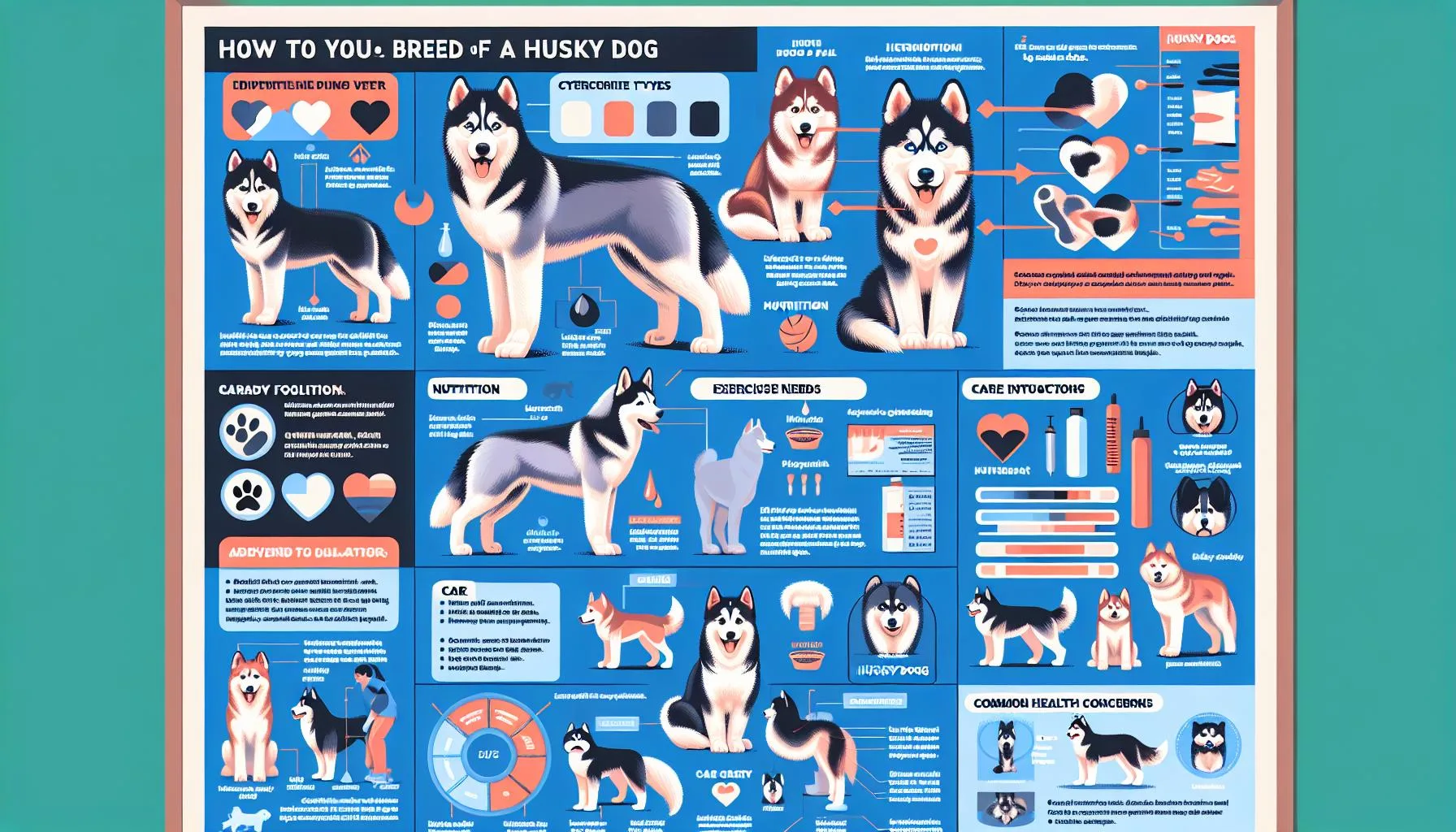
Alaskan Husky: An Iditarod Favorite
The Alaskan Husky breed holds a unique place in the world of sled racing, particularly as a favorite in the historic Iditarod race. With a strong focus on their historical significance, it’s essential to understand the distinctiveness of this breed in comparison to other types of huskies.
Alaskan Huskies possess a mixed ancestry, incorporating various northern breeds, which sets them apart from purebred Siberian Huskies and Alaskan Malamutes. This genetic diversity has resulted in a breed specifically tailored for stamina, endurance, and speed, making them particularly well-suited for sled racing and long-haul mushing activities.
The adaptability and athleticism of the Alaskan Husky have cemented their status as a premier choice for competitive canine team sports, drawing on their exceptional performance in challenging Arctic environments.
What type of husky do i have
Additionally, the history of the Alaskan Husky reflects a legacy deeply intertwined with the traditions of native Inuit and Yupik peoples, who selectively bred these dogs for their indispensable roles in transportation and daily survival in the harsh Alaskan wilderness. Their distinctive traits make them an integral part of the local culture and heritage, further emphasizing the significance of understanding the unique qualities of this breed.
Given their preferred use in sled racing, owners of Alaskan Huskies must pay special attention to their high energy levels, exercise requirements, and specialized care tailored to their working nature.
Dive deeper into the remarkable resilience of these sled-pulling champions and uncover the surprising facts about their tolerance to extreme temperatures. Explore the full scope of the Alaskan Husky's adaptability in the articly titled "The Chilling Truth: Husky Cold Tolerance Unveiled" at The Chilling Truth: Husky Cold Tolerance Unveiled.
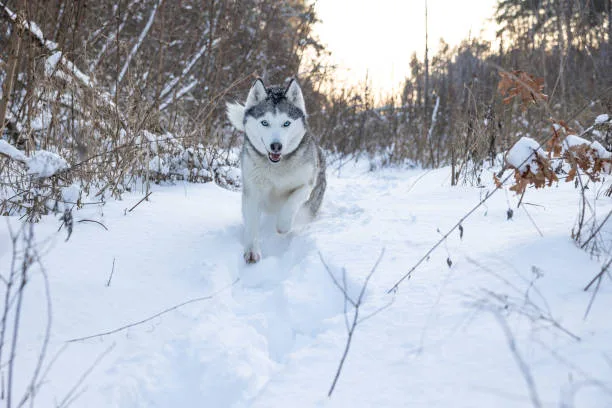
Understanding the Alaskan Malamute
The Alaskan Malamute is a breed known for its imposing size and gentle nature, setting it apart from other husky breeds. These dogs are substantially larger than Siberian Huskies, typically weighing between 75 to 100 pounds.
Their strength and sturdy build reflect their historical use as sled dogs, assisting in the transportation of heavy loads over long distances in challenging Arctic conditions. Their gentle temperament makes them particularly suitable for families, as they are affectionate, loyal, and sociable animals. Alaskan Malamutes possess a thick, double-layered coat that provides insulation in cold weather, consisting of a harsh outer coat and a dense, wooly undercoat.
This characteristic coat requires regular grooming and maintenance to prevent matting and tangling. Additionally, their distinctive markings and facial features, such as a broad head, erect ears, and a plumed tail, distinguish them from other husky breeds. These large, friendly dogs thrive on human companionship and flourish in environments where they receive ample attention and affection.
Despite their gentle disposition, they retain the independent and spirited nature common to huskies, necessitating consistent training and socialization from an early age to promote good behavior and prevent potential dominance issues. Understanding the unique qualities of Alaskan Malamutes is crucial for providing them with the specific care and attention they require to lead happy, fulfilling lives.
What type of husky do i have.
To better understand the life cycle of these majestic canines and ensure their health and well-being, delve into the intricacies of their reproductive timeline. Discover the duration of a husky's pregnancy and essential care tips by exploring the comprehensive guide on husky gestation periods.

The Samoyed: A Fluffy Relative
The Samoyed breed is instantly recognizable for its stunning all-white coat and friendly, lively nature. This fluffy relative of the husky is often mistaken for one due to their similar appearance, but they are a distinct breed of their own.
Samoyeds are known for their sociable and affectionate personality, making them wonderful companions for families and individuals alike. Despite their resemblance to true huskies, it’s crucial for Samoyed owners to understand the specific care needs and characteristics of this unique breed to ensure their health and happiness.
When considering caring for a Samoyed, it’s essential to acknowledge their notable differences from other husky breeds. While they share some physical attributes with huskies, such as a thick double coat designed to withstand cold climates, Samoyeds have a distinct temperament and energy level.
They are typically more outgoing and less independent than huskies, thriving on human interaction and companionship.
What type of husky do i have. Thus, providing ample opportunities for socialization and mental stimulation is vital for their well-being.
- Grooming: The Samoyed’s plush coat requires regular grooming to prevent matting and to manage shedding, which occurs twice a year.
- Exercise: While not as high-energy as some husky breeds, Samoyeds still need regular exercise and outdoor activities to remain healthy and happy.
- Temperament: Their amiable nature makes them excellent family pets, but they may require consistent training to channel their enthusiasm and prevent boredom.
Careful consideration of the specific needs and traits of the Samoyed breed is essential to ensure a fulfilling and harmonious relationship between owners and their beloved fluffy companions.
Understanding the needs of Samoyed puppies is key to their health and happiness as they grow. Delve into the essentials of puppy care with our comprehensive guide on the appropriate time to introduce water to young dogs.
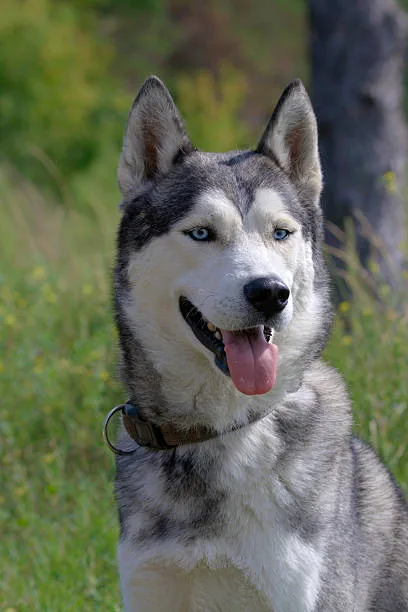
The Rare Seppala Siberian Sleddog
On Quora about: What type of husky do i have
The Seppala Siberian Sleddog is a unique and lesser-known type of husky breed that boasts a strong lineage and fascinating history. This breed is specifically bred for sledding and excels in various winter activities.
What type of husky do I have? Identifying the Seppala Siberian Sleddog revolves around their distinct physical traits, such as their athletic build, long legs, and deep chest, which allow them to thrive in demanding sledding environments. Additionally, their dense double coat provides protection from extreme cold, highlighting their adaptation to harsh winter weather. Seppala Siberian Sleddogs require specific care due to their active nature and high energy levels.
Regular exercise is paramount for this breed to maintain their physical and mental well-being. Engaging in activities like sledding, skijoring, or agility exercises can help meet their energy needs.
Mental stimulation through interactive toys and puzzle games is also essential to prevent boredom and potential behavioral issues. Proper nutrition tailored to their energy requirements and maintaining a healthy weight is crucial for their overall health. To effectively care for this rare husky breed, it’s important to understand their unique history and purpose.
The Seppala Siberian Sleddog’s lineage is deeply rooted in sled racing, and their care requirements reflect their working heritage. With the right approach to their exercise, diet, and mental stimulation, this unique husky type can thrive in a loving and dedicated environment..
To explore the reproductive cycle of these majestic dogs and learn how to support them during their heat periods, delve into our comprehensive guide on the heating patterns of huskies. Gain valuable insights on effectively caring for your Seppala Siberian Sleddog throughout their seasonal cycles by visiting Understand & Aid Your Pet During Husky Heat Seasons.
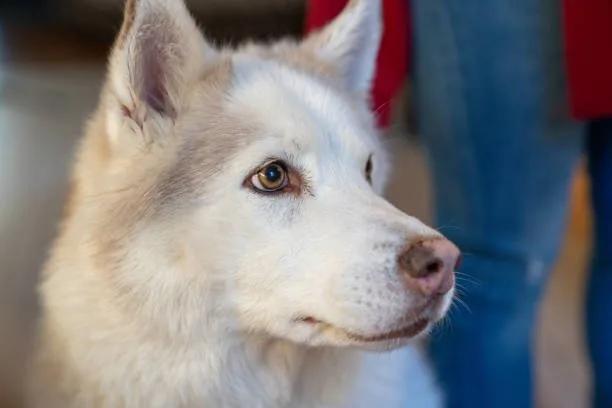
Physical Traits to Identify Your Husky
To determine the type of husky you have, it’s essential to recognize the distinctive physical traits that set each breed apart. When considering the physical characteristics of your husky, observe its size, coat color, and eye shape.
Siberian Huskies typically have a medium build with a dense double coat, often in combinations of black, gray, and white, and their almond-shaped eyes display blue, brown, or heterochromia coloring. Alaskan Huskies, on the other hand, vary greatly in size and appearance, with a broader color spectrum for their coats and a range of eye shapes.
Alaskan Malamutes are larger and stockier, with a thick, course coat and brown eyes. Samoyeds have a fluffy white coat, a distinct smile, and dark, intelligent eyes.
Seppala Siberian Sleddogs have a leaner build, resembling the Siberian Husky, but with more variation in coat colors and a strong focus on performance traits. By carefully noting these physical traits, you can gain valuable insights into the specific type of husky you have.
To determine the type of husky you have, it’s essential to recognize the distinctive physical traits that set each breed apart.
When considering the physical characteristics of your husky, observe its:
- Size: Siberian Huskies typically have a medium build, Alaskan Huskies have varying sizes, Alaskan Malamutes are larger and stockier, and Samoyeds have a substantial build.
- Coat Color: Siberian Huskies have combinations of black, gray, and white, while Alaskan Huskies display a broader color spectrum. Alaskan Malamutes have a characteristic coarse coat, and Samoyeds have a fluffy white coat.
- Eye Shape and Color: Siberian Huskies have almond-shaped eyes in blue, brown, or heterochromia coloring.
Alaskan Huskies exhibit a range of eye shapes, while Alaskan Malamutes have brown eyes, and Samoyeds have dark, intelligent eyes.
Reddit What type of husky do i have
By carefully noting these physical traits, you can gain valuable insights into the specific type of husky you have.
To delve deeper into the fascinating world of huskies and learn more about their communicative behavior, don't hesitate to explore our detailed article on the subject. Gain insight into the vocal expressions and unique personality traits that make huskies such captivating companions.
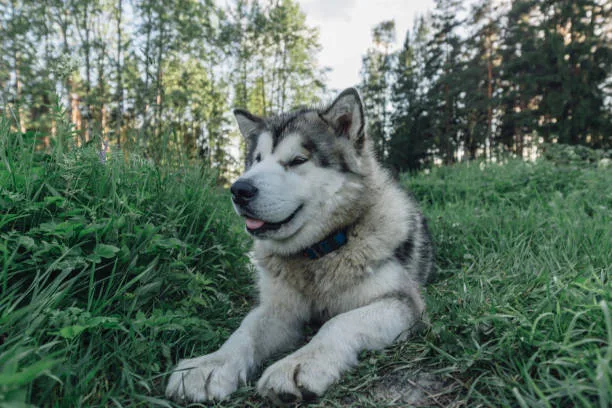
Behavioral Signs of Different Husky Types
Huskies exhibit a range of behaviors that can be linked to their specific breed type, affecting the way they should be cared for. Understanding these behavioral signs is crucial in tailoring your care approach to meet your husky’s needs.
What type of husky do I have? This question can be answered partially by observing their behavior. For instance, Siberian Huskies, known for their independent nature, may display a strong prey drive, wanderlust, and a tendency to howl.
On the other hand, Alaskan Malamutes, with their gentle disposition, may exhibit a more laid-back attitude and a strong desire for companionship. These distinct behavioral traits are essential in designing suitable training methods and exercise routines for different husky types.
Furthermore, behavioral signs can also be indicative of a husky’s breed mix, offering valuable insights into their genetic heritage.
For example, a husky with a mix of Samoyed may exhibit a friendlier and more sociable demeanor, while a mix with Alaskan Husky can display high energy levels and an inclination for endurance activities. Recognizing these behavioral nuances can guide you in providing the appropriate outlets for their energy, mental stimulation, and social interaction, contributing to a fulfilling and well-rounded care plan.
American Kennel Club: What type of husky do i have
In essence, understanding the behavioral signs of different husky types is integral to tailoring their care effectively.
By acknowledging and adapting to their breed-specific behaviors, you can ensure that your husky receives the necessary mental and physical stimulation, training, and companionship suitable for their unique traits and needs.
Understanding your husky's unique behaviors is just the starting point for ensuring their well-being. To dive deeper into their developmental stages and health, explore our comprehensive article on the growth rate and health optimization of huskies.
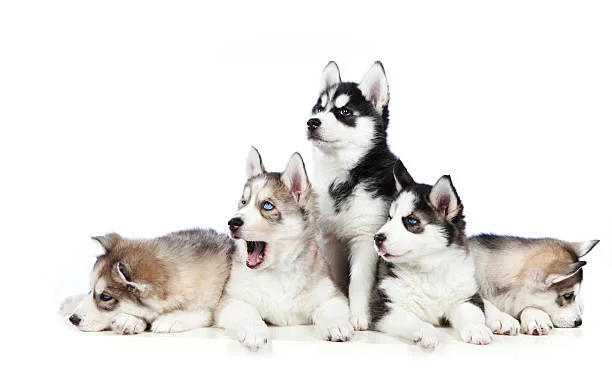
The Importance of Exercise for Huskies
Huskies are an energetic and athletic breed, requiring ample exercise to maintain their physical and mental well-being. Regular exercise not only keeps them fit but also helps curb behaviors stemming from boredom and excess energy.
What type of husky do I have? It’s crucial to identify your husky’s specific breed characteristics to tailor their exercise routine effectively. Siberian Huskies, for example, are known for their endurance and love for running, while Alaskan Malamutes thrive in activities that challenge their strength and stamina.
What type of husky do I have? Recognizing these differences allows you to customize their exercise regimen for maximum benefit. Engaging in activities like brisk walks, jogging, hiking, and even dog sports can help meet their exercise needs and strengthen the bond between you and your husky.
Remember, a well-exercised husky is a happy and contented pet. Regular physical activity also contributes to their overall health, agility, and longevity, making it an essential aspect of responsible husky care.
Understanding the exercise needs of huskies is crucial for their overall well-being and behavioral balance.
Ensuring that huskies receive ample physical activity is crucial for their physical health and mental stimulation. To learn more about properly caring for your husky after a common surgical procedure, visit Post-Surgery Care for Your Husky for essential tips and guidelines.

Tailoring Nutrition for Your Husky
Your husky’s type plays a crucial role in determining its dietary requirements. Different husky breeds have varying energy levels, metabolic rates, and potential health issues, all of which influence their nutritional needs.
Understanding the specific type of husky you have is essential for tailoring a suitable nutrition plan that supports their overall well-being. This targeted approach can help address breed-specific dietary sensitivities and optimize their health and vitality.
When it comes to nutrition, your husky’s type can influence factors such as portion sizes, protein and fat content, and essential nutrients.
For example, the Siberian Husky, known for its high energy levels, may benefit from a diet rich in lean proteins and healthy fats to support their active lifestyle. On the other hand, the Alaskan Malamute, a larger and potentially more sedentary breed, may require a balanced approach that prevents excessive weight gain while meeting their nutritional needs.
Understanding the unique qualities of your husky’s breed type can also help in identifying specific dietary sensitivities or allergies.
For instance, certain husky breeds may be more prone to food sensitivities or intolerances, necessitating a careful selection of ingredients and potential dietary restrictions.
By tailoring nutrition specific to your husky’s type, you can help mitigate potential health issues and promote overall well-being. Additionally, consulting with a veterinarian or a professional pet nutritionist can provide valuable insights into crafting a well-rounded diet that caters to your husky’s individual needs.
Overall, the importance of tailoring nutrition for your husky cannot be overstated, highlighting the significance of understanding and addressing their breed-specific dietary requirements for optimal health and vitality.
Understanding your husky's unique dietary needs is key to ensuring their health and vitality. Dive deeper into maintaining an optimal weight for your female husky by exploring our comprehensive guide, Maintaining Healthy Weight in Female Huskies.
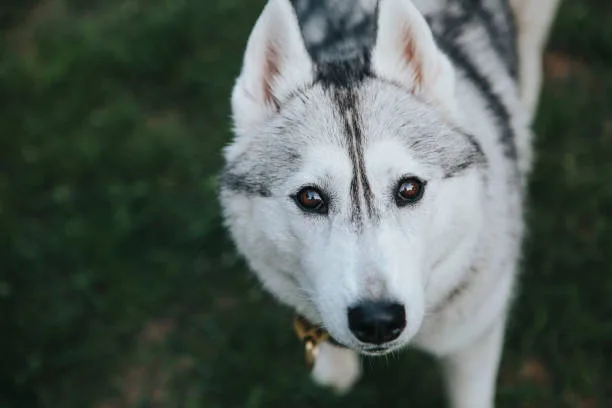
Cold Weather Care for Husky Breeds
Huskies are well-known for their ability to thrive in cold weather, given their origins in chilly climates. When it comes to cold weather care for husky breeds, it is crucial to provide adequate protection from the elements.
This includes ensuring that your husky has a warm and insulated shelter, away from cold drafts, and providing extra bedding to keep them cozy during the colder months. Additionally, it’s important to monitor their outdoor time and limit exposure to extreme cold, especially during frigid temperatures or winter storms. To protect your husky’s paws from ice, snow, and de-icing chemicals, consider using dog booties or paw wax.
These can help prevent irritation or injury from the harsh winter conditions. Proper paw care is essential to prevent dryness, cracking, and discomfort.
Moreover, maintaining a healthy and balanced diet is crucial for huskies during winter. Providing them with slightly more food than usual can help them generate additional body heat to stay warm.
Furthermore, ensuring access to unfrozen water at all times is vital for their well-being. Regular grooming remains important during the winter months, as their thick double coat serves as insulation against the cold. This means regular brushing to prevent matting and to help distribute their skin’s natural oils for optimal coat health.
Finally, paying attention to their behavior and health during colder weather is crucial. Any signs of discomfort or unusual behavior should be promptly addressed.
By taking these essential cold weather care measures, you can ensure that your husky remains healthy, comfortable, and safe during the winter months.
What type of husky do i have.
What type of husky do i have.
Caring for your husky in cold weather is crucial, but understanding the needs of other cold-adapted animals can be equally fascinating. Discover the surprising ways bearded dragons hydrate by reading our detailed guide, Unveiling the Drinking Habits of Bearded Dragons.
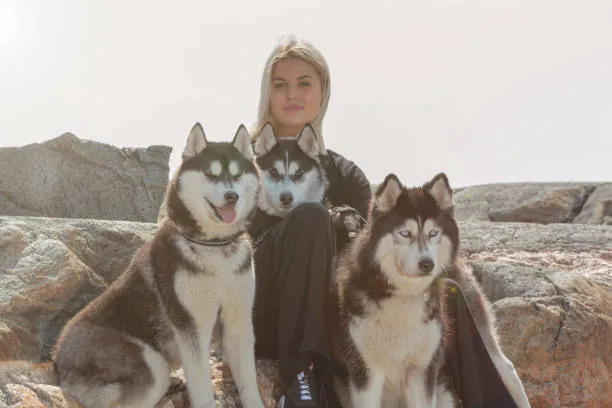
Dealing with a Husky's Thick Coat
Keeping your husky’s coat in top condition is essential for their overall health and well-being. Regular grooming not only helps manage shedding but also promotes healthy skin and prevents matting.
What type of husky do i have That’s why it’s crucial to understand the specific characteristics of your husky’s coat to tailor your grooming routine accordingly.
Siberian Huskies, Alaskan Malamutes, and other husky types have double-layered coats consisting of a dense undercoat and longer guard hairs. While Siberian Huskies typically shed their undercoat twice a year, Alaskan Malamutes tend to shed less frequently but in larger quantities.
Understanding these shedding patterns will help you adjust your grooming schedule to minimize loose fur around your home.
To manage your husky’s thick coat, frequent brushing with a sturdy, de-shedding tool is highly beneficial. What type of husky do i have Pay particular attention to the undercoat during shedding seasons, and consider using a slicker brush to prevent matting.
Additionally, it’s important to incorporate regular bathing using a dog-specific shampoo to maintain cleanliness and healthy skin.
Moreover, consider the climate and environment your husky is exposed to when managing their coat. In warmer regions, you may need to adjust your grooming routine to help your husky stay cool, while in colder climates, additional protection is necessary to shield them from the elements.
By understanding the nuances of your husky’s coat and tailoring your grooming practices accordingly, you can ensure that they remain comfortable, healthy, and looking their best year-round.
Maintaining your husky's coat requires dedication, but you might also be curious about the care and lifespan of other popular breeds. Discover the secrets to enhancing the longevity of Golden Retrievers by exploring our detailed guide on maximizing the lifespan of Golden Retrievers.
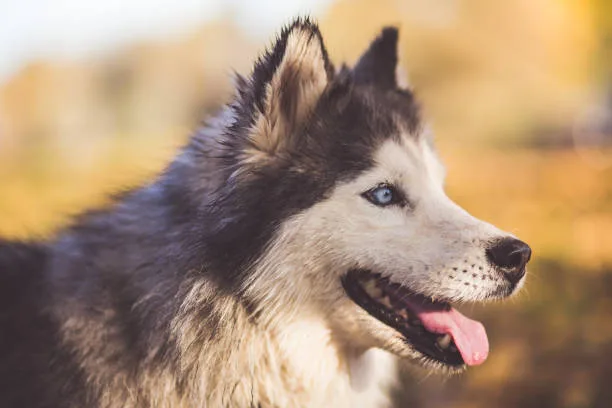
Training Your Husky According to Its Type
Training your husky according to its type is crucial for effectively addressing its unique needs. Each type of husky, whether it’s a Siberian, Alaskan, Malamute, Samoyed, or Seppala, has distinct traits that influence its training requirements.
Understanding these differences can significantly impact the success of your training efforts.
When it comes to Siberian Huskies, known for their independent nature, training should focus on establishing a strong leader-follower dynamic. Consistent commands and positive reinforcement techniques are essential for gaining their respect and cooperation.
Their high prey drive necessitates early socialization and leash training to manage their strong chasing instincts.
Alaskan Huskies, the working dogs of sled racing, thrive on physical activities and mental stimulation. Training should be geared towards harnessing their energy effectively, with a focus on agility and endurance.
Obedience training and tasks that mimic sled work can channel their natural instincts in a positive direction.
On the other hand, Alaskan Malamutes require a more gentle and patient training approach due to their sensitive disposition. Building trust is crucial, and harsh training methods can lead to resistance.
Training sessions should incorporate positive reinforcement and a calm, consistent demeanor to bring out the best in this gentle giant.
Samoyeds, known for their friendly disposition, respond well to training that emphasizes praise and rewards. Their cooperative nature makes them eager learners, and training should focus on maintaining their social and friendly demeanor while channeling their intelligence into various activities.
For the rare Seppala Siberian Sleddog, a breed with strong working instincts, training should incorporate tasks that simulate their historical purpose as sled dogs.
Their high energy levels and intelligence make them adept learners, and agility and obedience training are essential for mental and physical stimulation.
Regardless of the specific type of husky you have, it’s essential to tailor your training approach to accommodate their unique characteristics, ensuring a successful and harmonious relationship between you and your beloved companion.
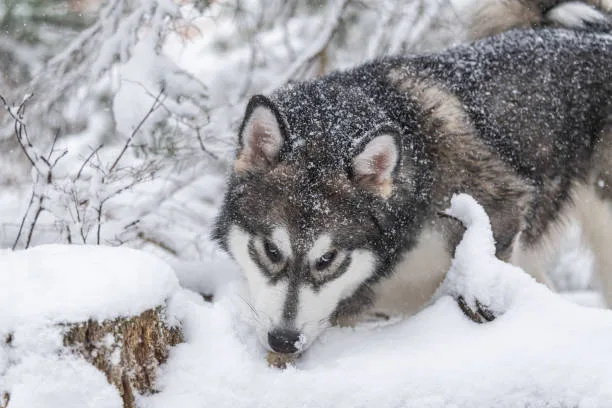
Recognizing the Unique Qualities of Husky Breeds
Huskies are renowned for their unique qualities, with each breed showcasing distinct characteristics that set them apart. The Siberian Husky, known for its stunning appearance and strong build, hails from the cold climate of Siberia.
Their striking blue or multicolored eyes and their characteristic “mask” markings make them easily recognizable. In contrast, the Alaskan Husky, favored for sled racing, is not a specific purebred but rather a category of working dog, prized for its endurance and speed.
The Alaskan Malamute, a larger and more robust relative of the Siberian Husky, possesses a friendly and affectionate disposition, differing from the more independent Siberian. Size and temperament play a crucial role in distinguishing Malamutes from other husky breeds. Understanding the history of husky breeds provides valuable insights into their origins and the environmental factors that have shaped their physical and behavioral characteristics.
This knowledge is essential for owners to comprehend the breeds’ unique needs and instincts. By delving into the breed standards, individuals can better differentiate between purebred huskies and husky mixes, contributing to informed decision-making when selecting a husky as a pet or working companion. Furthermore, resources dedicated to husky breed information offer an array of tools and guidance for understanding the complexities of husky breeds.
These resources provide helpful details on each breed, their specific care requirements, and tips for optimal health and well-being. Access to reliable husky breed information resources ensures that husky owners can provide the best care possible for their beloved canine companions, tailored to the distinctive needs of their specific husky breed.
What type of husky do I have indeed becomes a crucial question, and by recognizing the unique qualities of husky breeds, owners can better meet their pet’s needs.
It is essential for husky owners to grasp the distinctions between various husky breeds such as the Siberian Husky, Alaskan Husky, and Alaskan Malamute, allowing them to gain a deeper understanding of their pet’s traits and behaviors.
By learning about breed standards, owners can differentiate between purebred huskies and husky mixes, aiding them in making informed decisions when selecting a husky as a pet or working companion.
Access to dependable husky breed information resources equips owners with essential knowledge about each breed’s care requirements, thereby ensuring the well-being of their husky.
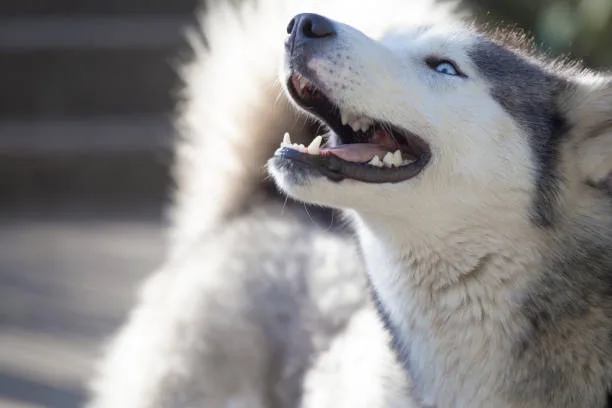
Husky Health and Wellness: A Guide to Care
Huskies are a unique breed with specific health and wellness needs that require careful attention and consideration. Grooming is a crucial aspect of maintaining a Husky’s well-being, given their thick double coat.
Regular brushing not only helps to manage shedding but also promotes healthy skin and coat. When it comes to exercise, Huskies are energetic and active animals that thrive on physical activity.
Daily walks, runs, or engaging in interactive play sessions are essential to keep them mentally and physically stimulated. Proper nutrition is vital for Huskies, as their dietary requirements may differ based on their type.
It’s important to provide a well-balanced diet that meets their energy needs while considering any breed-specific dietary tendencies. Additionally, during the colder months, it’s essential to take extra precautions to ensure that Huskies are protected from the cold weather.
This includes providing adequate shelter, monitoring their time spent outdoors, and making adjustments to their exercise routine as needed. Mental stimulation is equally important for Huskies, considering their intelligent and independent nature.
Engaging them in activities such as puzzle toys, obedience training, or interactive games helps prevent boredom and promotes their overall well-being. Regular veterinary check-ups are essential for ensuring Huskies’ long-term health, as early detection of any potential issues can lead to better outcomes.
To further support their well-being, it’s crucial to be aware of common health issues that affect the breed and take proactive measures to prevent them. By understanding the specific needs of your Husky type, you can tailor their care to ensure they lead a healthy and fulfilling life.
What type of husky do i have..

Training and Socialization Strategies for Huskies
Huskies are known for their intelligence and independent nature, which calls for tailored training methods that align with their learning style. When considering What type of husky do i have, it’s essential to start with early puppy training to establish a foundation for good behavior.
This includes basic commands, crate training, and housebreaking. Obedience training should follow to reinforce discipline and respect for commands.
Leash training is crucial to manage their natural inclination to pull and wander. Understanding the temperament of your husky is key to effective training. These canines thrive on mental stimulation and can become easily bored, leading to destructive behavior.
To prevent this, incorporating interactive toys, puzzles, and engaging activities into their daily routine is vital. Early socialization is also paramount to help Huskies acclimate to various people, animals, and environments.
Creating safe social groups and environments is crucial for Huskies, who have a natural pack mentality. Proper socialization can prevent behavioral issues and ensure they become well-adjusted companions.
To communicate effectively with these vocal breeds, use positive reinforcement and consistency in training. Huskies respond well to a confident and calm approach, fostering a strong bond of trust and respect.
By understanding their unique traits and offering proper training, you can cultivate a well-behaved and happy Husky..
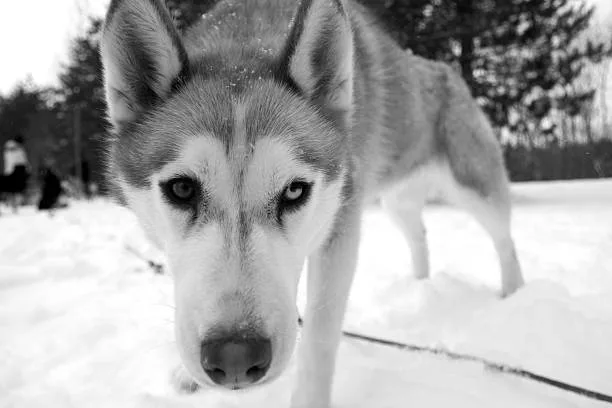
Ensuring a Fulfilling Lifestyle for Your Husky
To ensure a fulfilling lifestyle for your Husky, it’s crucial to cater to their high energy levels with suitable activities. Regular exercise is vital, including daily walks, runs, and interactive play to keep them mentally and physically stimulated.
Additionally, engaging in activities such as agility training or hiking can provide valuable outlets for their boundless energy. Proper accommodation is essential to prevent escape, as Huskies are known for their escapism tendencies.
Secure fencing and well-maintained enclosures are imperative for their safety. Furthermore, active participation in Husky-specific clubs and communities can be highly beneficial. These environments provide socialization opportunities and shared experiences with fellow Husky enthusiasts.
Additionally, considering rescue or adoption when expanding your Husky family can be incredibly rewarding, offering the chance to provide a loving home to a Husky in need. Spaying or neutering your Husky is an important aspect of responsible pet ownership, contributing to the overall well-being of the breed.
It not only helps curb the population of unwanted animals but also has health benefits for individual Huskies. Identification tags and microchips are essential for ensuring the safe return of your Husky in the event they become lost.
Recognizing the value of Huskies as a lifelong commitment is paramount. It’s crucial to acknowledge that Huskies require dedicated care, attention, and love for the entirety of their lives.
Embracing this commitment wholeheartedly ensures a deeply fulfilling and mutually rewarding relationship with your beloved Husky companion..

Conclusion: Embracing Your Husky's Unique Needs
It’s crucial to understand the specific breed of husky you have in order to provide the best care possible. Embracing and enjoying the unique needs of your husky will ultimately lead to a fulfilling and rewarding bond between you and your furry companion.
Whether you have a Siberian Husky, an Alaskan Husky, an Alaskan Malamute, a Samoyed, a Seppala Siberian Sleddog, or a mix of these breeds, recognizing and catering to their individual requirements will ensure their well-being. By knowing the type of husky you have, you can tailor their care, nutrition, exercise, grooming, and training to suit their distinct characteristics and needs, ultimately fostering a strong and harmonious relationship.
So, take the time to identify what type of husky do I have, and embrace the journey of providing the best possible care and enrichment for your beloved husky..

Leave a Reply